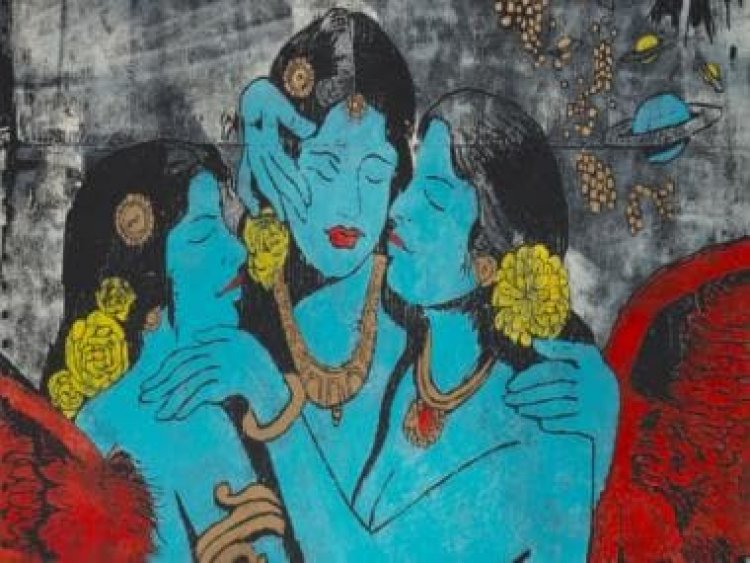Sex In Stone: An interactive talk on the Khajuraho temples busts many myths
Sex In Stone: An interactive talk on the Khajuraho temples busts many myths

The ancient temples of Khajuraho in Madhya Pradesh have long been associated with images of erotica. Though only five percent of the sculptures in Khaujraho are erotic in nature, their overpowering presence engulfs the rest of the striking structures in plebian discourse. Scholarly debate has dubbed these temples as religious, stately and representative of daily life in equal measure over the years, but these alternative interpretations are often overlooked. MAP (Museum of Art & Photography) Bengaluru chose to shine a light on these lesser-known theories addressing the Khajuraho temples, through an interesting virtual talk organised as part of their MAP Talks series. Entitled ‘Sex in Stone’, the event was in collaboration with the Centre for Studies in Gender and Sexuality (CSGS), Ashoka University.
The Khajuraho temples are a group of monuments constructed by the Chandela dynasty between 885 AD and 1050 AD. They were brought to the world’s notice by Capt. T S Burt in the 1830s. Their intricately detailed structures, many of which are fashioned in erotic poses, became a sensation, causing shock waves among western (and western-influenced-Indian) society.

Of the 85 temples that were reportedly constructed till the 12th century, only 25 survive to this day. Most of the erotic sculptures line the outer wall of the Lakshman temple, and it was these that have truly caught the fancy of historians and social commentors alike. A number of texts have been written on the subject, questioning the reason for displaying these sensual statues. The remaining temples and sculptures are mostly religious in nature, representing both Hindu and Jain beliefs.
“Do the sculptures depict progressive practices or was the display of desire merely symbolic? How do the art and architecture of these monuments iterate or subvert the definitions of the sacred and the sensual?” were the questions this panel discussion sought to answer. The line-up of speakers was chosen accordingly.
These included educator Seema Anand, a mythologist specialising in women’s narratives. She combines her academic expertise with her cultural knowledge and is considered an authority on several ancient Indian texts, including the Mahabharata and the Puranas. There was Art Historian Dr Alka Pande, who taught Indian Arts and Aesthetics at Panjab University for over ten years and extensively wrote and edited books on Indian aesthetics, culture and photography; as well as Art Historian Shivaji K Panikkar, a gay identified art historian specialising in Indian Art, who taught for over 35 years. These esteemed guests were in conversation with the host for the event – author Anirudh Kanisetti, who is currently an Editor at MAP Academy focussing on premodern South Indian art, apart from helming numerous other creative ventures.

The one thing all the panellists agreed on was that more than ‘Temples of Sex’, these stone figurines were a sign of the times. Panikkar pointed out that since they were works of art commissioned by the state, they represented an official view. It is unknown whether this view was a nod to prevailing societal mores or an attempt at appeasing the gods. For Anand, the biggest appeal lay in the statues of women shown in different positions, such as playing with a ball. “In the 5th century, people believed that Mother Earth had forgotten how to enjoy pleasure – so these temples were built to bring back her mode of happiness so she could stay productive and happy,” she explains. Pande refers to Khajuraho as promoting the holistic way in which ancient texts guided Indians to live. This was based on the four Purusharthas – Dharma, Artha, Kama, and Moksha. She also points towards one of the Chandela kings, who was known for being a patron of the tantric cult, who may have had the sculptures commissioned to describe the transcendence from Karma to Moksha.
The discussion’s open-ended nature provided interesting food for thought, and was thus in line with the objective for this virtual talk series hosted multiple times a month by MAP, Bengaluru. Kamini Sawhney, Director, MAP, shares the model and the intent behind it, “MAP regularly organises 5-7 events, virtual and physical, every month, however, the theme of each month’s events differ. We often organise events that are related to parallel programming at MAP, such as newly launched exhibitions. The events are held live on Zoom and Youtube.”

She goes on to share that their online events range from workshops to masterclasses, artist talks, and panel discussions. Each one is curated to appeal to audiences of diverse ages, from kids to adults, from laymen to museum professionals. Their intent behind this talk was to attract an older audience well-versed in the history of Khajuraho, those who are curious about these temples, and students just beginning their art historical journey.
When asked why they have continued operating virtually while the rest of the world opens its doors, Sawhney says, “MAP’s virtual talks will continue even once the museum space opens up physically in December this year. Our digital programming and outreach has allowed us to connect with audiences across the world, which has helped us achieve our mission of taking art to the people and making art accessible to diverse audiences. The merit of virtual talks is in the fact that we don’t have to limit our audience to those just based in Bengaluru.”
In the month of August, MAP curated a series to mark the 75th anniversary of the Partition, among other interesting events. For World Photography Day, they opened their sizeable photo archive to the world, for a rare digital treat. It seems something is always brewing at MAP Bengaluru, leaving art and culture aficionados spoilt for choice.
Noor Anand Chawla pens lifestyle articles for various publications and her blog www.nooranandchawla.com.
Read all the Latest News, Trending News, Cricket News, Bollywood News, India News and Entertainment News here. Follow us on Facebook, Twitter and Instagram.
What's Your Reaction?


























































